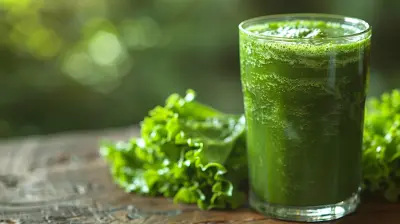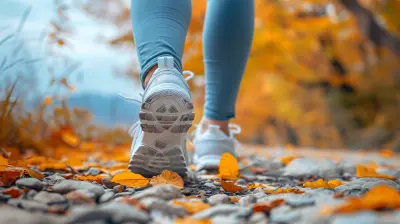How Cycling Can Help You Lose Weight and Build Muscle
2 July 2025
When it comes to shedding those extra pounds and building muscle, many people think of intense gym workouts or strict diets. But what if I told you there's a fun, low-impact way to achieve both? Yes, I'm talking about cycling! Whether you're cruising through city streets or pedaling up a mountain, cycling is a fantastic way to torch calories and sculpt your muscles. Let’s dive into how this two-wheeled wonder can transform your body.

Why Cycling is an Excellent Workout
Cycling isn't just about getting from point A to point B. It’s a full-body workout that boosts your cardiovascular health, strengthens muscles, and helps with weight loss. Here’s why cycling stands out:- Low Impact, High Reward – Unlike running, which can be hard on your joints, cycling is a low-impact exercise that minimizes the risk of injuries.
- Burns Calories Efficiently – Depending on intensity and duration, cycling can burn anywhere from 400 to 1,000 calories per hour.
- Builds Lean Muscle – While cycling primarily targets your lower body, it also engages your core and upper body (especially during uphill climbs or standing rides).
- Boosts Metabolism – Regular cycling increases your metabolism, helping you burn calories even when you’re not riding.
Let’s break this down further: how exactly does cycling help with weight loss and muscle building? 
How Cycling Helps You Lose Weight
1. Cycling Burns Calories Like Crazy
Weight loss comes down to one simple rule: burn more calories than you consume. Cycling is one of the best cardio exercises for torching calories. The number of calories burned depends on several factors:- Your weight – The heavier you are, the more energy your body uses.
- Workout intensity – A leisurely ride won’t do much, but pedaling at a high intensity will melt fat faster.
- Duration – The longer you ride, the more calories you burn.
For example, a 150-pound person burns around 600 calories an hour cycling at a moderate pace (12-14 mph). Increase the speed and resistance, and the calorie burn shoots even higher!
2. Boosts Your Metabolism for Fat Loss
Cycling does more than just burn calories during the workout—it revs up your metabolism, keeping the calorie burn going even when you're resting. This is called Excess Post-Exercise Oxygen Consumption (EPOC), where your body continues burning calories long after you've finished pedaling.3. Targets Stubborn Belly Fat
If you struggle with belly fat, cycling can help reduce it. Studies show that consistent moderate-to-high intensity cycling reduces visceral fat, which is the dangerous fat around your organs. Combining cycling with healthy eating habits accelerates fat loss even more.4. Interval Training Maximizes Weight Loss
Want to supercharge your fat burn? Try High-Intensity Interval Training (HIIT) on your bike. This involves short bursts of intense effort followed by recovery periods. Here's a simple but effective HIIT cycling workout:1. Warm-up for 5 minutes at a moderate pace.
2. Sprint hard for 30 seconds.
3. Ride at an easy pace for 1 minute.
4. Repeat for 20-30 minutes.
This method keeps your heart rate up and burns fat more efficiently than steady-state cycling alone. 
How Cycling Helps Build Muscle
1. Strengthens Lower Body Muscles
Cycling primarily targets the lower body, working out muscles like:- Quadriceps (front thighs) – Power your pedal strokes.
- Hamstrings (back thighs) – Support pedaling motion.
- Glutes (butt muscles) – Engage when riding uphill.
- Calves – Work each time you push down the pedals.
Over time, cycling helps tone and define these muscles, giving your legs a lean, athletic look.
2. Engages Your Core and Upper Body
Though cycling focuses on the lower body, your core and upper body play a bigger role than you might think. Maintaining balance and stability works your abs, while gripping the handlebars engages your arms and shoulders. If you want to maximize upper body gains, complement cycling with strength training exercises like planks, push-ups, and shoulder presses.3. Resistance Training on a Bike
Think of riding uphill as weightlifting for your legs. The higher the resistance, the harder your muscles work. To increase muscle-building benefits:- Ride in high gear – This forces your legs to push harder, increasing strength.
- Do hill climbs – Uphill cycling targets glutes, quads, and hamstrings more intensely.
- Use a stationary bike with resistance – Boost muscle engagement by increasing the tension.
4. Cycling and Muscle Recovery
If you already lift weights, cycling can help with muscle recovery. It’s a great low-impact way to flush out lactic acid, reduce soreness, and keep your muscles engaged without overstraining them.
Optimizing Your Cycling Routine for Best Results
To make cycling work for both weight loss and muscle gain, you’ll need a structured approach. Here’s what you should focus on:1. Vary Your Rides
- Long, steady rides (Endurance Training) – Great for fat-burning and cardiovascular health. Aim for 60-90 minutes at a moderate intensity.- High-intensity rides (Speed & Power Training) – Boosts metabolism and muscle strength. Alternate between sprint bursts and recovery cycling.
- Hill Climbs (Strength Training) – Builds lower-body power and endurance.
2. Fuel Your Body Correctly
Cycling burns a lot of energy, so your diet should support both weight loss and muscle gain.- For weight loss: Stick to high-protein, moderate-carb, and healthy-fat meals. Avoid excessive sugar and processed foods.
- For muscle building: Increase protein intake with foods like chicken, eggs, beans, and lean meats.
3. Incorporate Strength Training
To build upper body strength and improve overall muscle tone, combine cycling with strength exercises like squats, lunges, and core workouts.4. Stay Consistent
Cycling once a week won’t cut it. Aim for at least 3-5 sessions per week for noticeable results. A mix of endurance, interval, and strength-focused rides ensures balanced progress.Additional Benefits of Cycling
Besides weight loss and muscle building, cycling comes with a whole host of bonus benefits:- Improves cardiovascular health – Strengthens your heart and lowers blood pressure.
- Boosts mental health – The combination of fresh air and physical activity reduces stress and anxiety.
- Enhances endurance & stamina – Over time, you’ll find yourself riding longer distances with ease.
- Environmentally friendly – Cycling is not only good for you but also for the planet!
Conclusion
Cycling is one of the most effective ways to burn fat, build muscle, and improve overall fitness. Whether you're riding for fun, commuting to work, or training hard, incorporating cycling into your routine will help you lose weight, strengthen your muscles, and boost your health—all while enjoying the ride!So hop on your bike, start pedaling, and watch the transformation happen. The road to fitness is just a ride away!
all images in this post were generated using AI tools
Category:
Cycling FitnessAuthor:

Arthur McKeever
Discussion
rate this article
2 comments
Faye Warner
Pedal hard, snack later. Gym who? Cycle your way fit!
November 22, 2025 at 4:19 PM
Zina McCaw
Cycling is a rewarding way to lose weight and build muscle—consistency is key!
July 8, 2025 at 4:09 AM

Arthur McKeever
Thank you! Absolutely, consistency in cycling not only aids in weight loss but also enhances muscle tone effectively. Keep pedaling!


